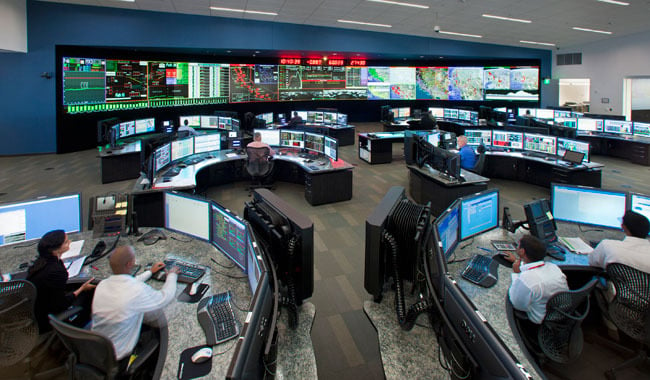
A panel discussed the impact of CAISO’s interconnection reforms at last month’s Energy Storage Summit USA 2025 in Dallas.
The panel, titled ‘Understanding the Impact of Interconnection Reform: What’s Next for Deployment in CAISO?’ was moderated by Isshu Kikuma, energy storage analyst at BloombergNEF. Speakers Sudipto Bhowmik, director of transmission and grid interconnection for Capital Power, and Dr. Erdal Kara, director of power fundamentals, CAISO/MISO desk at Vistra Corp.
Enjoy 12 months of exclusive analysis
- Regular insight and analysis of the industry’s biggest developments
- In-depth interviews with the industry’s leading figures
- Annual digital subscription to the PV Tech Power journal
- Discounts on Solar Media’s portfolio of events, in-person and virtual
Or continue reading this article for free
The annual event was put on by our publisher Solar Media and is now in its seventh year.
In 2024, the Federal Energy Regulatory Commission (FERC) approved changes to the CAISO interconnection process. The changes were approved despite pushback from many organisations in the renewables industry. Additionally, some organisations requested that FERC reject the changes entirely.
Kikuma, Bhowmik and Kara took the stage, explaining the changes and highlighting their potential benefits and drawbacks.
The goal of CAISO interconnection reform
CAISO interconnection reforms included controversial changes like a scoring system for projects based on commercial interest, creating new zonal clusters and additional study criteria.
Kikuma began by asking the panellists about the purpose of the changes.
Kara answered: “The main objective is just to currently solve the interconnection backlog issues.”
Prior to the interconnection changes, an interconnection request had to be sent to the California system operator in a two-week period, after which the submitted projects would be grouped together as a queue cluster.
When the cluster 14 window closed in April of 2021, it saw a 241% increase in submissions. CAISO delayed cluster 15 to complete cluster 14 studies, but still saw 541 new interconnection requests for the April 2023 cluster 15 window, a 45% increase on the previous cluster.
Bhowmik added that FERC order number 2023, a 2023 decision from FERC to rework the interconnection process, requires CAISO, and other ISOs, to complete cluster studies within a year.
The zonal and weighted systems
The changes to CAISO’s interconnection process made two zones: deliverability zones and merchant zones.
If a project is in a deliverability zone, it will compete for the capacity available in an area. CAISO also says these zones are where projects are needed the most.
Merchant zone submissions have to self-fund network upgrades without reimbursement. Kara noted that developers are likely to withdraw from the queue if their project is placed in the merchant zone.
The scoring system is an attempt to make the cluster more manageable.
Bhowmik explained the points: “There are three large buckets: commercial interest (30 pts), site viability (35 pts) and system need (35 pts). System need is unique to CAISO, it is trying to align with whatever transmission studies have already been done.”
These changes increase costs, especially for projects in the merchant zones. As Kara explained:
“[Developers with merchant projects] need to pay additional deposits at US$110,000 per MW. If you have a 300MW battery, it needs a US$3 million deposit. So, if you’re a small developer, like a startup etc, you don’t have that much cash.”
He continued, “It’s really all these [additional fees] kind of killing the merchant zone projects, and definitely not favourable for the smaller developers overall.”
Moving forward with new reforms
The additional fees for merchant zone projects raise questions about fairness and transparency, which the panel addressed.
Kara said further of smaller developers, “I don’t think there is any objective to eliminate those. But I think the main objective is to eliminate projects which do not have much viability. It’s trying to bring the most efficient project to the group. Survival of the fittest.”
Bhowmik spoke on the transparency of the policies, stating:
“On the transparency front, CAISO is putting a whole bunch of tools out there, but at the end of the day, you will get a score. You cannot see what the other scores are going to be like. You can only see your scores, and if you feel that these scores are lower, you can ask for clarification, but that’s about it.”
He continued, “You can’t actually see what specific criteria was used in each of these buckets to give you that specific score. But you know that CAISO has put in the ability to actually ask for clarification, I think that is a good start.”
Ending the session, Kikuma asked Kara and Bhowmik what people should be watching for from CAISO this year.
Kara mentioned the California Public Utilities Commission (CPUC) proposal regarding battery safety standards, which contains new requirements and safety standards for energy storage projects in the state.
Bhowmik noted the importance of engaging with CAISO and stakeholders to address the issues of the new interconnection process and the potential hurdles it causes for smaller developers.

